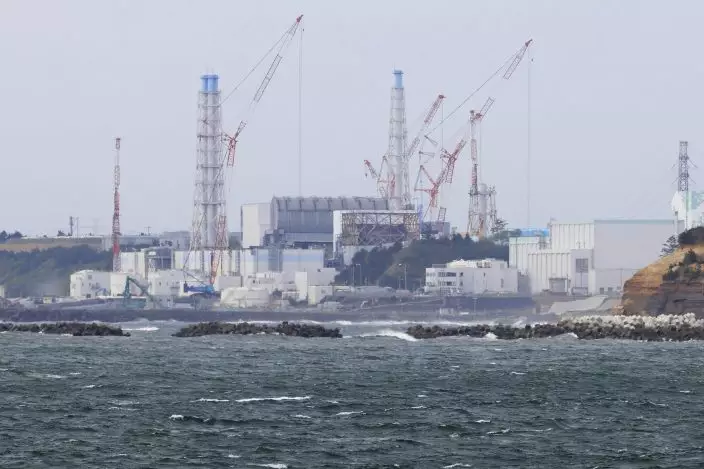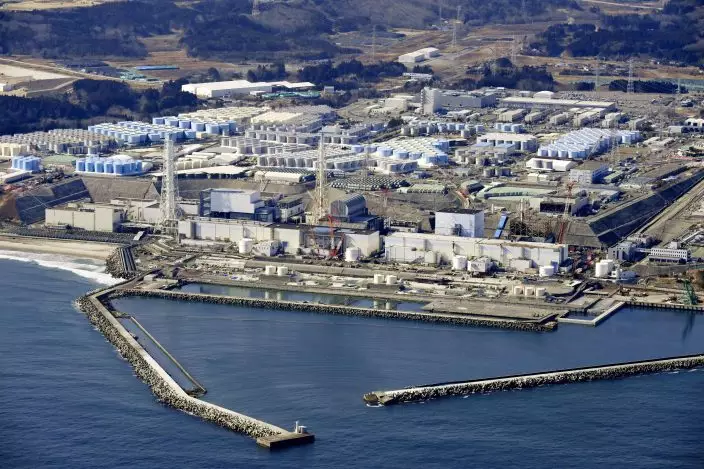Radioactive water accumulating in tanks at the wrecked Fukushima nuclear plant will be released into the sea in two years after it is treated, Japan's government said Tuesday in a decision long delayed by safety concerns and protests.
Cabinet ministers endorsed the release as the best option for handling the massive amount of water that has been stored at the Fukushima Daiichi nuclear power plant since the massive earthquake and tsunami in 2011 caused reactor meltdowns and leaks of cooling water from the damaged reactors.
The plant's operator, Tokyo Electric Power Co., says its storage capacity will be full in the fall of 2022.

Fukushima Daiichi nuclear power plant is seen from Namie town, Fukushima prefecture, north of Tokyo, Tuesday, April 13, 2021, Japan's government said Tuesday it has decided to start releasing massive amounts of radioactive water stored in tanks at the wrecked Fukushima nuclear plant in two years after treatment. (Yusuke OgataKyodo News via AP)
Prime Minister Yoshihide Suga told the Cabinet meeting that the government adopted the release to sea as “most realistic” and that the disposal of the water is “unavoidable in order to achieve Fukushima's recovery.”
TEPCO and government officials say tritium, which is not harmful in small amounts, cannot be removed from the water, but all other selected radionuclides can be reduced to levels allowed for release. Some scientists say the long-term impact on marine life from low-dose exposure to such large volumes of water is unknown.
Under a report of the basic plan adopted by the ministers Tuesday, TEPCO will start releasing the water in about two years after building a facility under the regulatory authority’s safety requirements.

This Feb. 13, 2021, aerial photo shows Fukushima Daiichi nuclear power plant in Okuma town, Fukushima prefecture, north of Tokyo, Tuesday, April 13, 2021, Japan's government said Tuesday, April 13, 2021 it has decided to start releasing massive amounts of radioactive water stored in tanks at the wrecked Fukushima nuclear plant in two years after treatment. (Kyodo News via AP)


